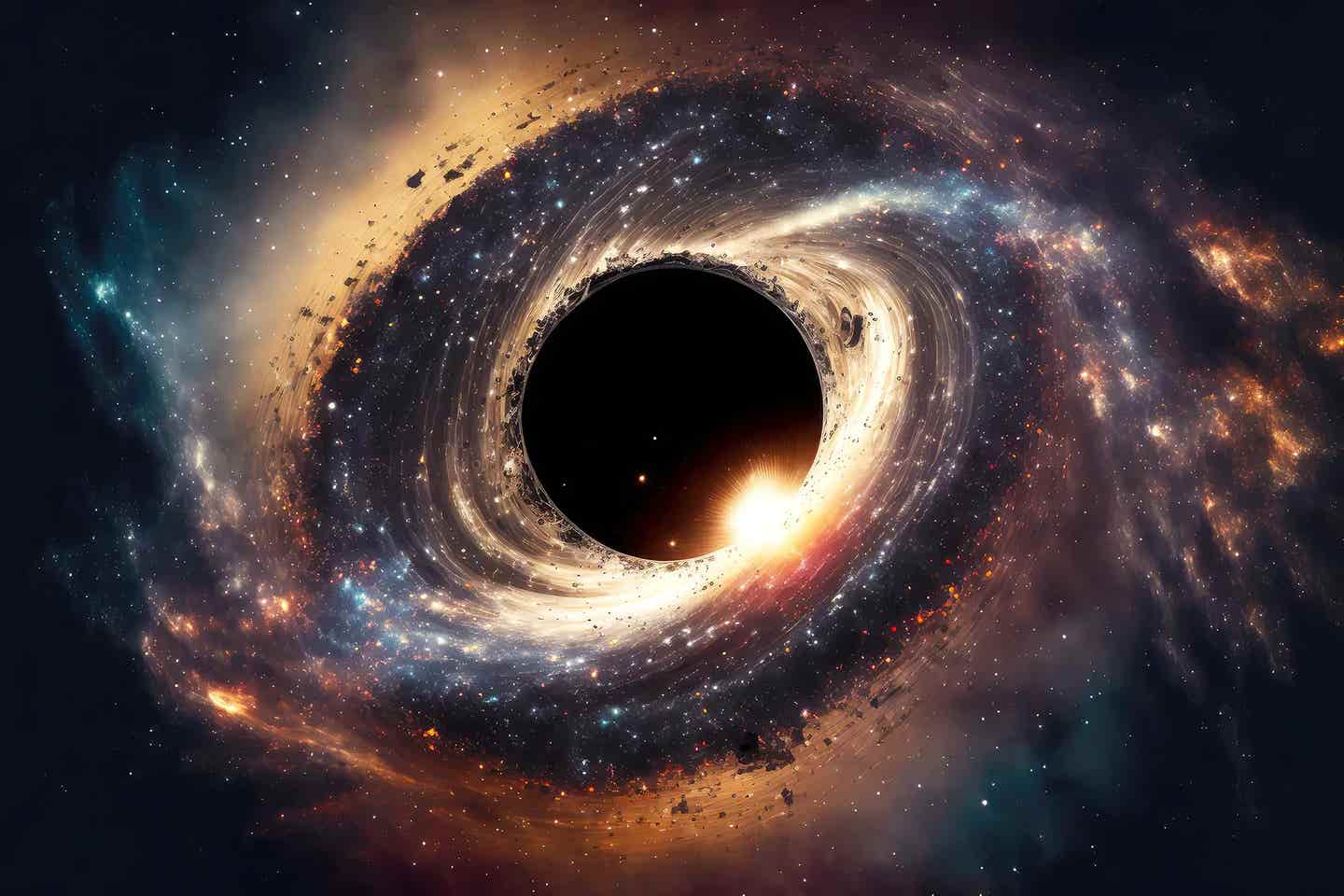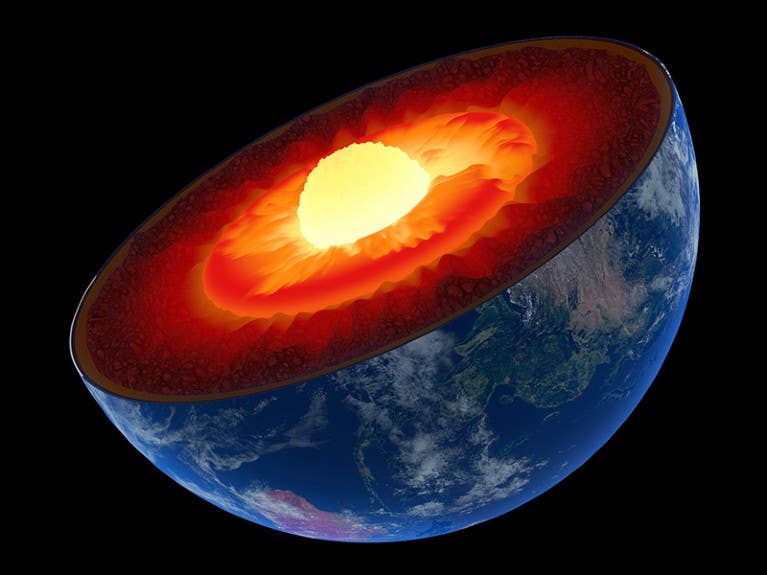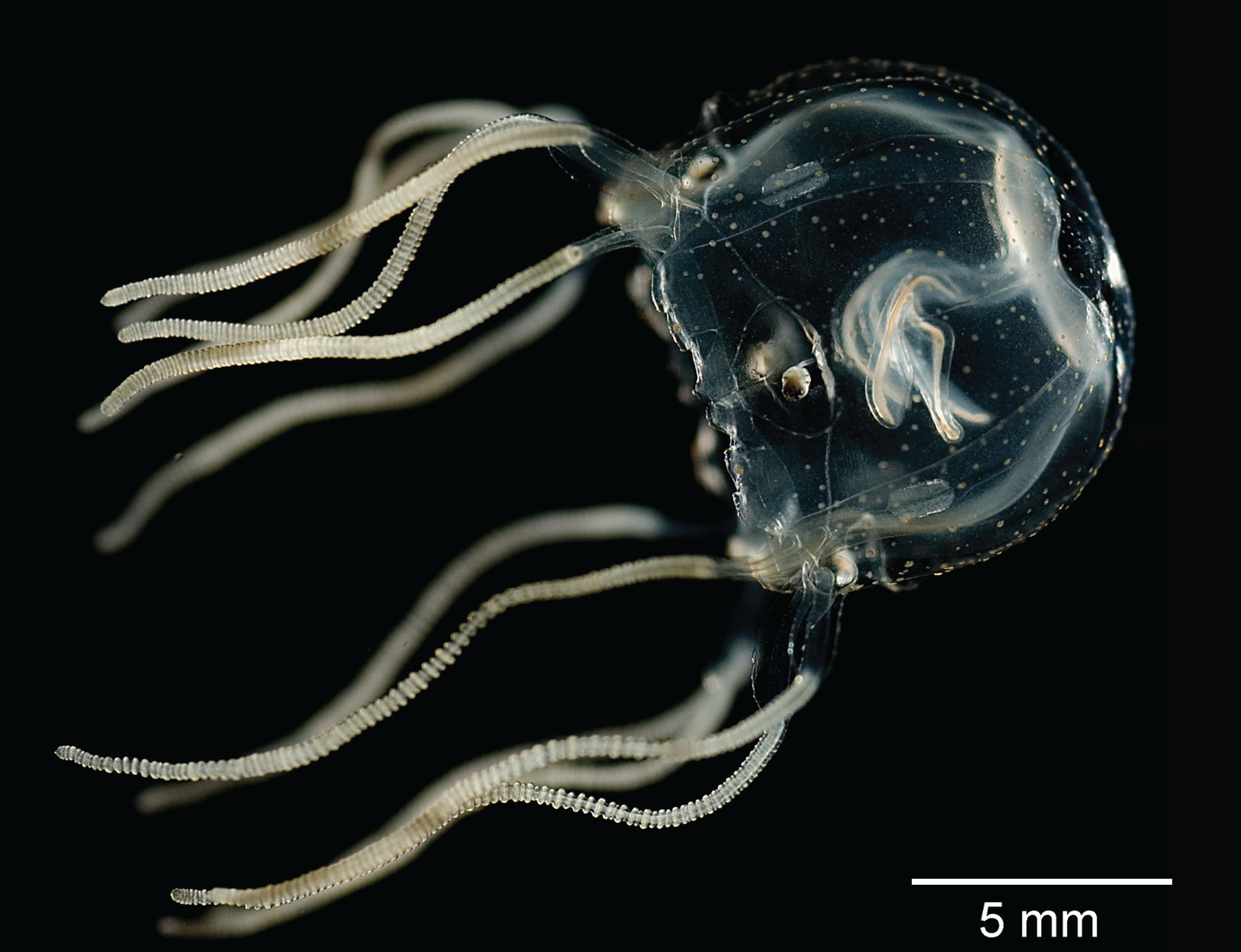Black holes could exist much closer to Earth than scientists previously thought
Groundbreaking study has provided new insights that suggest these cosmic behemoths could be a lot closer than we ever imagined.

[Sept. 13, 2023: Staff Writer, The Brighter Side of News]
What’s inside a black hole? Enrico Rinaldi has used quantum computing and computer learning to describe what is believed to be the interior of a black hole. (CREDIT: Creative Commons)
The Milky Way, our vast galactic home, is known to cradle mysteries that both baffle and excite the scientific community. One such enigma is the elusive nature of black holes, especially the smaller stellar mass ones.
While it's estimated that our galaxy should host anywhere between 10 million to a staggering 1 billion of these elusive entities, we have only identified around 20. Yet, a recent groundbreaking study has provided new insights that suggest these cosmic behemoths could be a lot closer than we ever imagined.
Black Holes: The Silent Observers of the Galaxy
Black holes are, by nature, incredibly hard to detect. Unless they're actively consuming a star or emitting radiation, they remain shrouded in darkness and mystery. So far, the closest known stellar mass black hole to our planet sits approximately 1,565 light-years away. But what if there were others, even closer, silently lurking in our own cosmic neighborhood?
A team of dedicated astronomers has now turned their gaze to the Hyades cluster, an assemblage of stars merely 150 light-years from us, nestled in the constellation of Taurus. This cluster, visible even to the naked eye on a clear night, is classified as an open cluster – a gravitationally bound congregation of stars sharing similar characteristics.
Related Stories
These sibling stars, born from the same expansive molecular cloud, eventually drift apart over time. The Hyades, with an age of around 625 million years, boasts hundreds of stars. The heart of this cluster is a bustling hub of densely packed stars, while those at the outskirts hint at beginning their celestial departure.
Astronomers have long speculated that the core of such clusters, where stars jostle and merge due to their close proximity, could be the very birthplace of black holes. Yet, the intrinsic dark nature of these objects makes them challenging to identify.
Stefano Torniamenti’s Indirect Search
Astrophysicist Stefano Torniamenti from the University of Padua, Italy, and his team decided on a more nuanced approach. Utilizing data from the Gaia satellite, which meticulously maps the three-dimensional movements and positions of Milky Way stars, they modeled the mass and stellar activities of the Hyades cluster.
Distributions of χ2ν from the fit s to the density profiles for star clusters with different numbers of BHs in the Hyades at the present day. The filled area include the entire distributions of star clusters, while the solid line displays the star clusters with 150M⊙≤Mh≤190M⊙. (CREDIT: Monthly Notices of the Royal Astronomical Society)
.
Through rigorous simulations designed to mimic these observations, a startling pattern emerged. The results were most congruent when they incorporated two or three stellar mass black holes into the equation.
These simulations suggest that black holes either currently reside within the cluster or were expelled a mere 150 million years ago, implying they might still be in the vicinity. Such a recent expulsion would ensure the continuation of their gravitational signatures within the heart of the cluster.
Density profiles for high-mass stars (upper panels) and low-mass stars (lower panels), for 16 models drawn from the cases with NBH = 0 (left-hand panel) and NBH = 2–3 (right-hand panel). The blue dashed lines are the individual models. The blue solid line is the median of the distribution at selected radial distances, with the associated errors. The Plummer uncertainties are comparable to those of the N-body models. The orange line is the observed profile (CREDIT: Evans & Oh 2022).
While pinpointing the exact locales of these black holes remains a hurdle, Torniamenti's findings significantly reduce the gap. These black holes in the Hyades could potentially be the closest known to our Solar System, overshadowing previous records by a factor of ten.
No Cause for Alarm
For those concerned about these cosmic predators, rest easy. The fastest any of these black holes could journey is 3 kilometers per second. Even if on a direct path to us, they would take an insurmountably long time to reach our vicinity. Moreover, their gravitational attraction is no different than a star of equivalent mass. Their silent approach might be unnerving, but the threat is equivalent to that posed by rogue stars.
Broader Implications of the Discovery
This revolutionary discovery isn't just about identifying black holes; it holds the key to understanding the larger puzzle of the Milky Way's hidden black hole population.
As astrophysicist Mark Gieles from the University of Barcelona puts it, "This observation helps us understand how the presence of black holes affects the evolution of star clusters and how star clusters in turn contribute to gravitational wave sources."
He further added, "These results also give us insight into how these mysterious objects are distributed across the galaxy."
For those eagerly awaiting more details, the team’s complete findings have been detailed in the respected Monthly Notices of the Royal Astronomical Society.
As we pierce deeper into the mysteries of our galaxy, we're reminded of the immense wonders it holds. This discovery not only reshapes our understanding of the Milky Way but also reaffirms the importance of constant exploration and the unyielding spirit of scientific inquiry.
Note: Materials provided above by The Brighter Side of News. Content may be edited for style and length.
Like these kind of feel good stories? Get the Brighter Side of News' newsletter.



